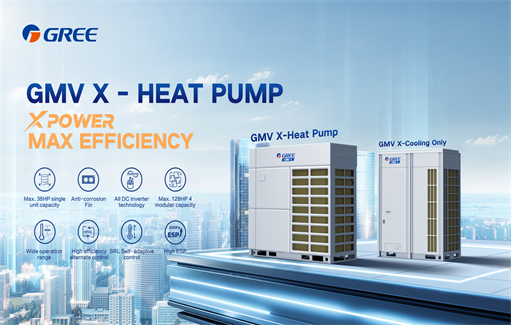5 Common Types of Commercial Air Conditioning Systems
1. Single-Split Systems
A single-split system is the most basic and widely used commercial HVAC configuration. It has two main parts: one indoor unit and one outdoor unit. The indoor unit handles the air inside, while the outdoor unit manages the heat from the space. Refrigerant lines connect the two, and together they cool the space efficiently.
This system’s simplicity makes it ideal for small businesses with basic cooling needs. Each indoor-outdoor pair functions independently, allowing you to cool specific areas without investing in a comprehensive system for the entire building. So, if you want to cool multiple rooms or zones, you’ll need more than one unit.
2. Multi-Split Systems
A multi-split system works like a single-split setup. However, there’s one big difference: you can connect several indoor units to just one outdoor unit. This way, you can cool several distinct zones while minimizing the footprint of exterior equipment. This means your exterior walls and rooftop are cleaner and less crowded.
Each indoor unit can also operate independently to provide customized temperature control across different areas.
Most systems support two to nine indoor units per outdoor unit, which is ideal for growing businesses or those that need to cool separate areas at different temperatures.
3. Variable Refrigerant Flow (VRF/VRV)
Variable Refrigerant Flow (VRF) systems, sometimes called Variable Refrigerant Volume (VRV) systems, are one of the most technologically advanced commercial HVAC solutions available. The system uses one outdoor unit to deliver the exact amount of refrigerant needed to multiple indoor units.
Unlike traditional systems that turn fully on or off, VRF systems adjust their output based on real-time needs. The technology relies on inverter-driven compressors, which can run at different speeds instead of cycling on and off. That allows the system to respond smoothly to temperature changes and reduce energy waste, resulting in better comfort and lower energy use.
4. Variable Air Volume (VAV) Systems
Variable Air Volume (VAV) systems offer a centralized approach to commercial air conditioning. They use one central air handler to supply cooled air through a network of ducts. Each area or zone has its own VAV terminal or box that controls how much air it receives based on thermostat readings, depending on the temperature needed at any given time.
So, while the air temperature stays constant, the airflow adjusts to maintain comfort. By adjusting airflow instead of temperature, the system delivers targeted comfort while reducing energy use and mechanical strain.
5. Packaged HVAC Systems
Packaged HVAC systems combine all essential components (compressor, condenser, evaporator, and air handler) into a single, self-contained unit. This approach eliminates the need for separate indoor and outdoor equipment.
These units are typically installed on rooftops or concrete pads next to buildings and are connected to the interior via ductwork to distribute conditioned air.
Packaged systems can be configured for cooling only, with electric heat, gas/electric combinations, or heat pump functionality, depending on climate and building needs. They are commonly used when indoor space is limited or in buildings that prioritize fast deployment and easy maintenance access.



